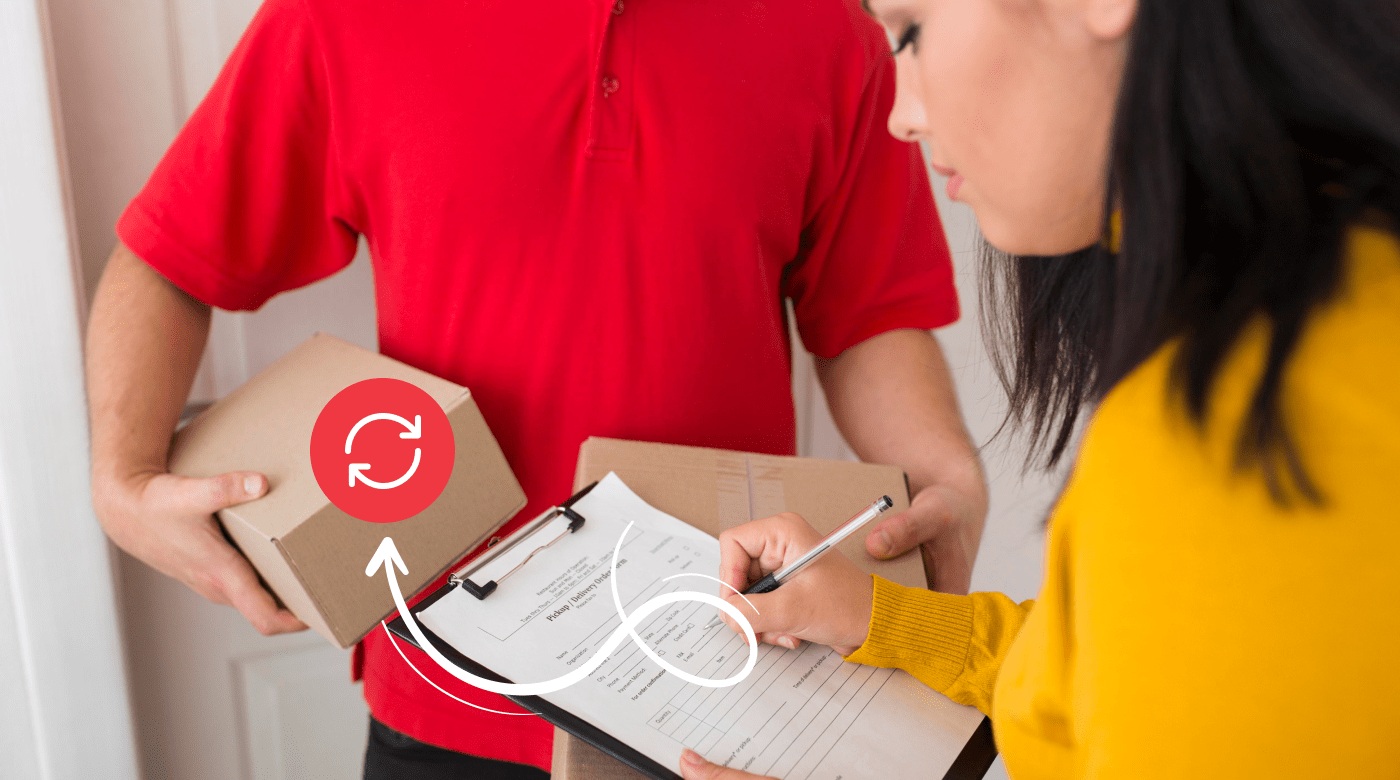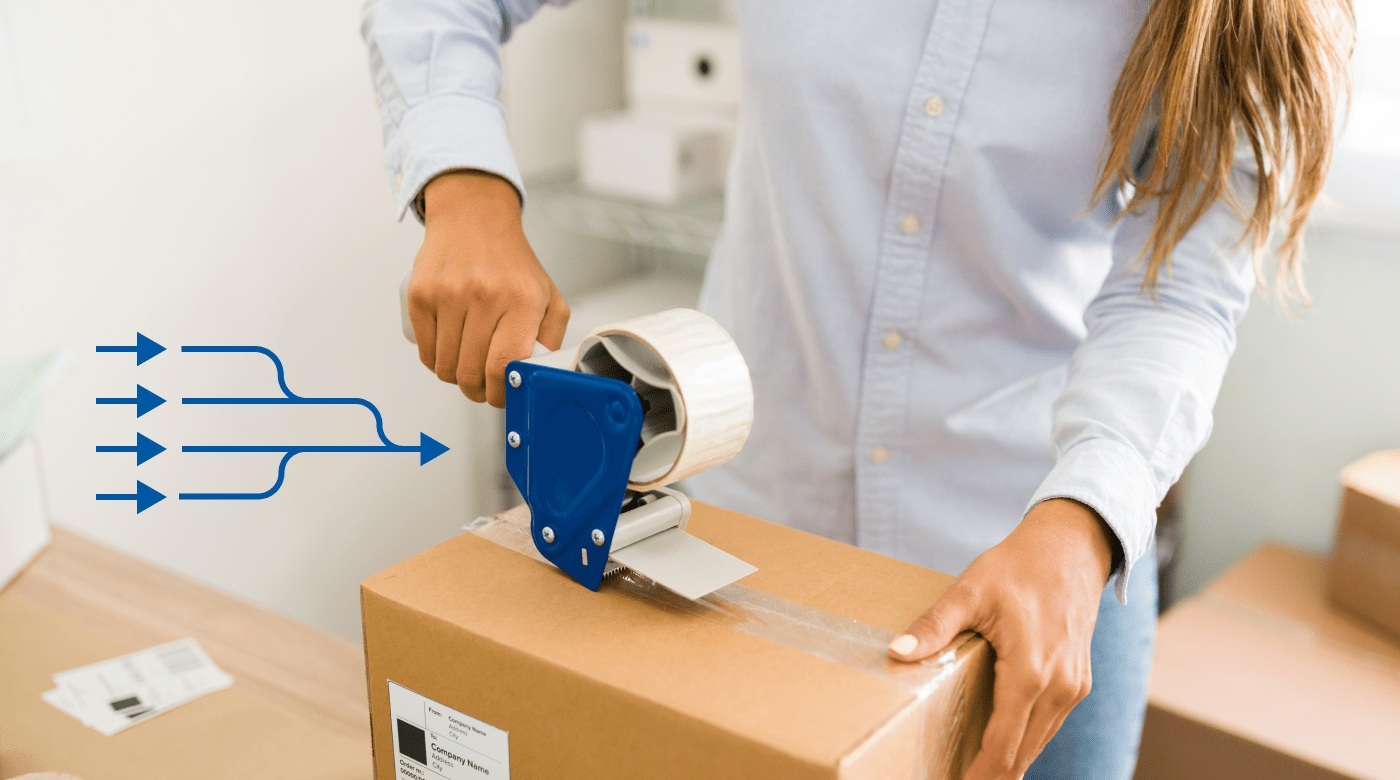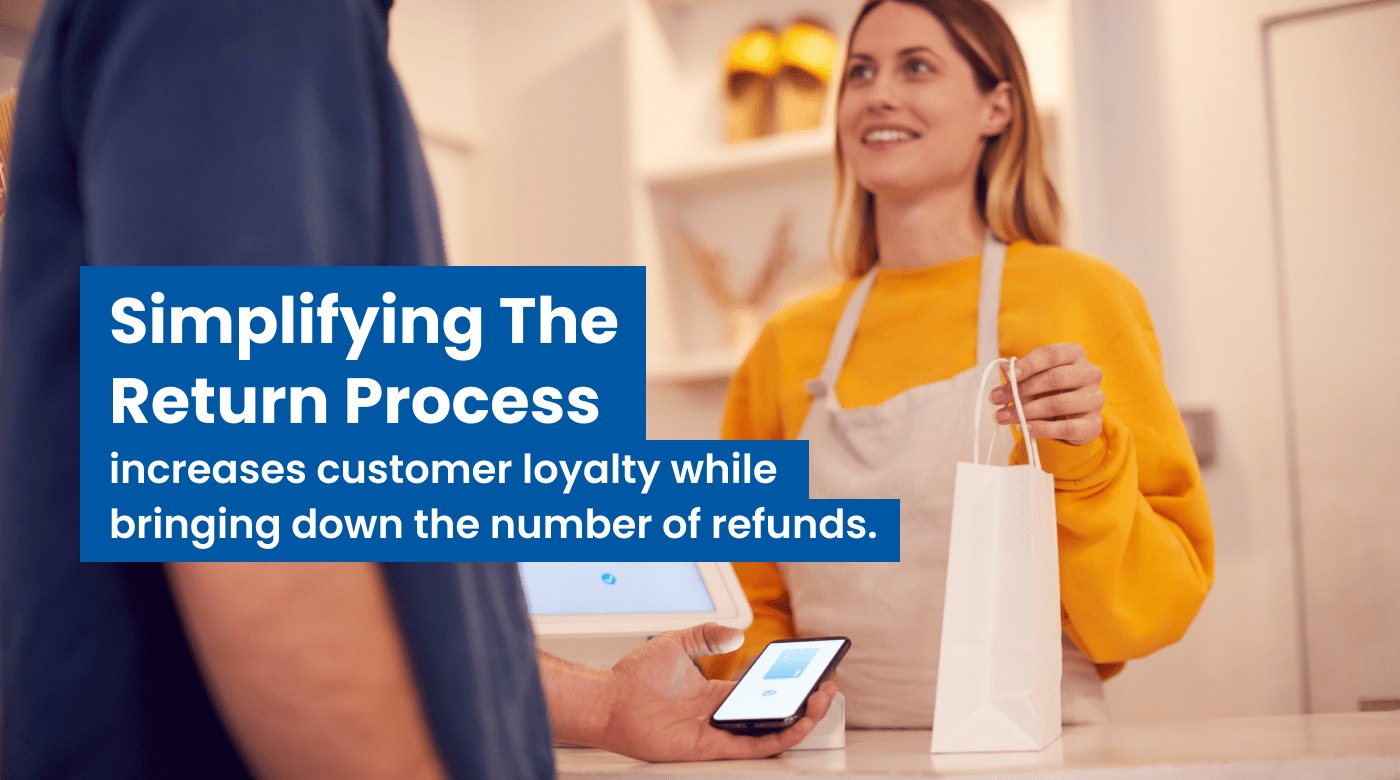It's no secret that returning a product has long been a headache-inducing ordeal for customers and companies alike. Customers have always wanted a return experience that is as convenient and simple as their initial purchase. While brands are constantly trying to simplify reverse logistics, it’s proven to be a double-edged sword. The result is a mishmash of outcomes that leaves consumers frustrated and companies with disrupted brand confidence, unpredictable costs, and a higher carbon footprint.
It’s not hard to imagine why returns are such a tough beast to tame. Predicting who’ll keep and who will send a product back is not easy. While a simplified return policy fosters brand loyalty, paradoxically, it can increase product returns, too. Case in point, e-commerce stores experience significantly higher return rates compared to their brick-and-mortar peers.
So, are returns doomed to be a bane for customers and retailers in perpetuity? Fortunately, no. On-demand and same-day returns can help companies not only provide a smooth return experience but cut back on costs as well, provided they play their cards right.
Traditional return logistics set up retailers for a catch-22 situation
While free returns might woo shoppers, let’s face it: there’s no such thing. Historically, companies have always viewed returns as an inevitable cost of doing business. And, until 2020, most had a good handle on it. After the pandemic, online purchases saw a dramatic surge resulting in greater sales but also more return requests. On top of that, customers often compensate for their lack of (in-store) hands-on experience by ordering multiple items and then returning the ones they don’t want.

The increasing return costs are putting a strain on retailers' profitability. The cost of restocking, repacking, and sanitizing returned items is greatly eroding profit margins across multiple industry sectors. Several companies also report that the value of customer returns is growing faster than their sales. The problem is particularly grave in the apparel industry as many brands prefer to send returned items to landfills than process and restock them. Additionally, fraudulent returns have seen a nearly 400% increase in value since 2018, accounting for over 10% of total return volumes.
Unfortunately, there’s no one-size-fits-all solution that can work here. Some companies have responded by keeping returns free to maintain their brand loyalty. Others have made their return policy more restrictive. For example, Zara began charging their customers £1.95 for returning items purchased online in 2022 while keeping in-store returns free. Other retailers charge a restocking fee instead of making the customer pay for the return.
So, retailers following outdated logistics models find themselves in a damned if you do, damned if you don’t scenario. On top of that, older logistics models are ill-equipped to take advantage of the refund effect. An experiment by Chang-Yuan-Lee and Carey K. Morewedge found that customers were more likely to spend money from a refund than a bonus. The researchers hypothesized that customers treated the proceeds from a refund as money already lost, so they were more likely to spend it on another purchase. In other words, retailers are staring at a massive opportunity to cross-sell during the return process but lack the systems needed to capitalize on it.
Companies should instead use strategic return management that introduces just the right amount of friction in the return process. On-demand returns and same-day returns can prove very useful here as they mitigate the negative effects of bulk returns while keeping the overall process smooth and effortless. By offering a streamlined and convenient return experience, on-demand returns encourage exchanges instead of refunds, reducing return costs and increasing customer satisfaction.
On-demand and same-day returns simplify your exchange process
On-demand and same-day returns revolutionize the exchange process by providing a simple and hassle-free return experience. Customers can schedule pickups by specifying their address, date, and preferred time slot on the retailer’s website. They can either go for an immediate pickup or select time slots on the days indicated by the retailer. Once the customer sends their request, the system automatically routes it to a specified courier closest to the package's location.

On-demand returns also sometimes include a same-day option with which customers can return items the same day. The process saves customers time and effort, enhancing their overall experience and satisfaction. They needn’t research return policies, find order numbers, repackage items, or visit multiple return locations to drop their package off.
On-demand returns streamline the return process by leveraging cloud systems and automation such as DeliverySolutions. By automating key steps like scheduling pickups, generating return labels, and coordinating with carriers, on-demand returns reduce manual effort and free up valuable company resources.
Moreover, cloud systems that facilitate on-demand returns can provide valuable insights into consumer buying and returning habits. They can analyze purchase cycles to help retailers gain deep visibility into consumer behaviors and preferences. The data gained can inform business strategies, optimize inventory management, and enhance customer satisfaction.
For example, if you find that 70% of your returns are due to size misfits, you can offer an exchange with the right size instead. Likewise, if someone’s not sure when they might be available for a pickup, they can select a return window a few days later.
How to use on-demand returns to power customer loyalty initiatives
While on-demand returns are a powerful tool, they need to be implemented as part of a strategy. As we saw above, merely making the return process a one-click affair can prove counterproductive. But there are several ways through which you can give your customers a great return experience and bring down costs while driving up brand loyalty.

Automate your returns
As on-demand returns offer customers multiple options, manual return processing is simply no longer an option. Fortunately, since the return process is fairly straightforward, it can be automated. Automated return management is even more critical if you wish to offer product exchanges to customers who open a refund request. Indeed, managing exchanges can be very hard manually, especially in the apparel sector, so much so that many companies drop the idea altogether. Finding the right fit for hundreds, if not thousands, of customers can quickly become cost-prohibitive.
Automation serves more purposes beyond enabling on-demand returns. By moving your return management to the cloud, you can free up your customer support team to tackle more pressing issues. The advanced analytics that come with reverse logistics systems also reduce errors and enhance end-to-end visibility into the return side of your supply chain.
Size the return window strategically
Most retailers offer a standard return window, which is usually anywhere from 7 to 30 days long. But, a tiered return policy could be more effective here. Customers who wish to maintain their relationship with you can be offered more time to return their products relative to those who don’t.
Likewise, customers can be incentivized to exchange rather than ask for a refund. You may even go a step further and create an exclusive exchange program that offers additional benefits to those who opt for it. For example, same-day returns can be kept exclusively for people opting for an exchange. The program can also include discounts, gift cards, and faster shipping relative to standard purchases.
Cover the cost of return shipping
A cloud-based return management system is far cheaper than a manual one. Coupled with a product exchange program, on-demand returns can drive down your reverse logistics costs significantly.
Like the return window, shipping costs can also be used to drive brand loyalty. Offer free shipping to customers who opt for an exchange instead of a refund as a thank you. On the other hand, a small shipping or restocking fee may be levied on refund requests. If you do go for the latter, be sure to offer an exchange instead.
Conclusion
Clearly, on-demand and same-day returns present fantastic opportunities. Not only do they offer a better return experience, but they also reduce uncertainty and costs and introduce exchange opportunities, too. Additionally, integrating on-demand and same-day returns can represent a monumental leap for most companies, as it requires a departure from long-established legacy systems. Such a transition can be challenging due to the complexities involved in adopting new technologies, revamping existing processes, and training personnel on the updated systems.
DeliverySolutions already integrates with the best same-day vendors in the market, such as Uber, DoorDash, and Roadie. With our comprehensive suite of solutions, we provide the necessary tools and guidance to streamline and seamlessly integrate on-demand returns into any existing supply chain. Schedule a demo to see how our industry-leading technology works and how it can help you make logistics more customer-centric.
Ryan Caldarone
Ryan is a Sr. Digital Marketing Manager with over ten years of experience in B2B eCommerce, specializing in brand storytelling and content. Having contributed to hundreds of creative projects for SMBs and startups across the tech, energy, and fine arts sectors, Ryan brings diverse perspectives.
Topics from this blog: Delivery Improvement Shipping Logistics
